Stemmed wine glasses were first made in Murano, Italy in the 14th century and are now the indispensable way to enjoy fine wine. Stems are ubiquitous but what are their practical benefits?
Wine glasses have stems for three main reasons: to avoid warming the wine, to facilitate swirling, and to avoid fingerprinting or smudging the bowl.
To immediately learn about the precise benefits of stems on wine glasses – jump to this link.
The history of stemmed wineglasses
In pre-history, drinking vessels were fashioned from organic materials like coconut shells, gourds, and animal horns. By Roman times, vessels were cups or beakers, with or without handles.
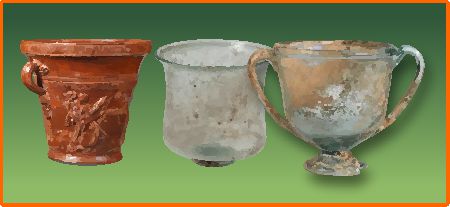
Roman drinking vessels were made from pottery, glass, or metal. Some had handles but none had stems.
Murano glassblowers invent the stemmed wineglass
Vessels have been used for religious services since early Christian times. The traditional stemmed chalice is a standing cup used to hold sacramental wine during the Eucharist. The stem, with its decorative pommel, enabled the priest to hold the chalice up high and proclaim the liturgy to the congregation.
A breakthrough in glass manufacture occurred when innovative craftsman on the island of Murano, in the Venice lagoon, copied the style of stemmed chalices and goblets to create exquisite wine glasses with decorative stems.
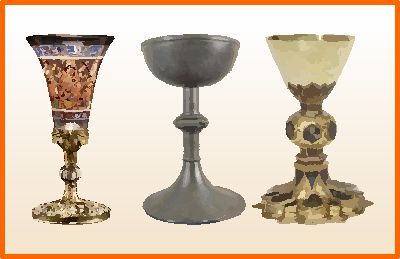
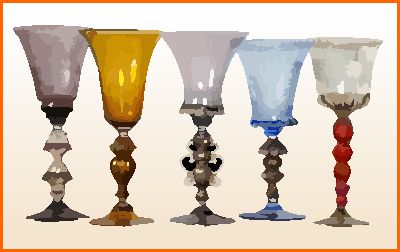
The evolution of the stemmed glass
Early Venetian glasses have evolved into today’s stemware as the size of the bowl has increased (from 3 oz up to 14 oz or more) and as the decorative stem (with pommels) has become a simple slender cylinder.
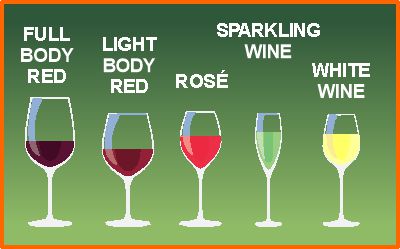
Modern Stemware has evolved
The shapes of modern stemmed wine glasses have been designed to best present modern varieties of wine – large bowls for full-bodied Burgundies and narrow flutes for sparkling champagne.
If you would like our recommendations on stemmed wine glasses, jump to this link
As an Amazon Associate, I earn from qualifying purchases
The construction and balance of a wineglass
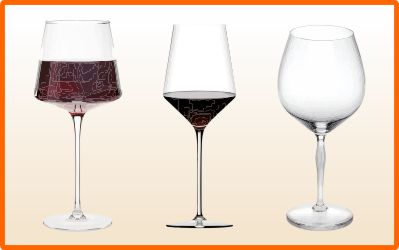
The height of the stem and the width of the base are critical to creating a balanced and enjoyable glass to hold. Your glass doesn’t necessarily have to have a very long or extra thin stem, providing it is in proportion to its base.
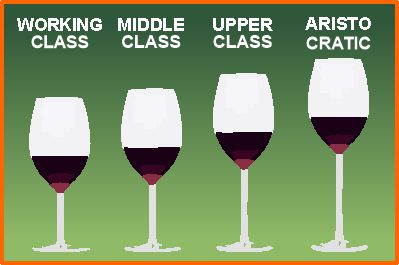
The right wineglass can’t make a bad wine good, but it can certainly make a good wine more enjoyable. A tall stem looks stylish but if taken to extremes is unstable and much too easy to break.
Long stemmed wine glasses certainly look elegant but they are more fragile. We like the following glasses made from lead-free crystal and remarkably sturdy despite their slender stems

A warning about lead crystal: women who are pregnant or planning to become pregnant should avoid lead crystal. Read this comprehensive post for info on the dangers of lead.
The function of the stemmed wineglass
There are three main benefits to stemmed rather than stemless wine glasses:
- Taste: maintaining the correct temperature.
- Aroma: swirling the glass to release the bouquet
- Esthetics: avoiding unsightly smudging of the bowl
1) Maintaining the correct temperature
According to expert sommeliers, red wines should be served slightly cooler than room temperature, between 63–68 °F (14–20 °C), whereas white wines taste best at cooler temperatures (between 50-55 °F (8–12 °C).)

Holding your glass by the bowl (the only possibility with stemless glasses) will increase the temperature of the wine and potentially interfere with the flavor. Always use the stem to avoid warming your wine!
Note that if your host has served the Château Lafite Mouton Rothschild from the refrigerator by mistake – you can certainly warm it to the correct temperature by cupping the bowl in your hands.
2) Swirling to release the bouquet
Why do experts swirl wine? Contrary to misconception it is not to aerate the wine, it is to help invigorate the aromas. Swirling wine is a common part of wine drinking for many people and is much more easily performed in a stemmed rather than a stemless glass.
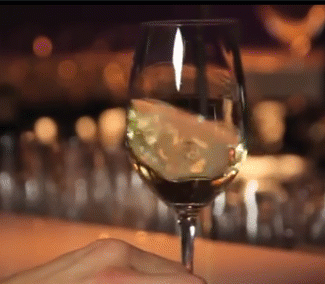
Correct swirling – using two fingers on the foot of the stem and rotating the glass in tight, counterclockwise circles on a flat, stable surface. Swirling agitates the wine, which heightens both aroma and flavor.
3) Esthetics: avoiding unsightly smudging of the bowl
Esthetics are important when enjoying fine wine in a fancy restaurant. Holding a glass in the correct way – by the stem will avoid the problem of “smudging” the bowl of the glass

Unsightly fingerprints disfigure the bowl of a wine glass – smudges and food stains lowering the visual impact.
Stemless glasses
The main benefit of a stemless wine glass is that they’re harder to break and easier to store.
If your family members or friends are clumbsy and accident-prone – buy stemless glasses.
Stemless glasses are pretty much the same as the glasses we use daily for water, milk and juice. Having no stem means that you are going to mark the glass with smudges or fingerprints, but this is not a big issue for an informal occasion.
Conclusions
It’s obvious that fancy glassware can’t make a bad wine taste good, but it can certainly improve the enjoyment of a good wine. Fine crystal wine glasses are much more fragile than restaurant-grade glasses but first – decide if your entertaining style requires elegant glassware:

If you do entertain on a sophisticated scale or even if you enjoy fine wine with a romantic dinner – consider the benefits of fine crystal compared with restaurant-grade glasses

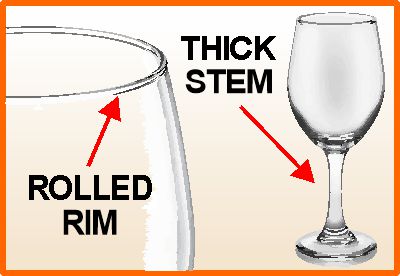
Our conclusion is that if you’re spending more than $50 on a bottle of wine, it should really go in a nice glass and the key requirements for a decent wine glass are: .
- an elegant stem to enable swirling
- a bowl that is thinner at the top (to direct the aroma to your nose)
- A thin rim so as not to disrupt the flow of the wine
Recommendations for crystal wine glasses
Amazon is flooded with Chinese long-stemmed wineglasses of variable quality. We still prefer the traditional Reidel brand for guaranteed European quality.
Tips for the washing and care of stemware
- Remove rings & jewelry before washing crystal
- Wash stemware in warm soapy water – never in the dishwasher
- Place a washcloth in the bottom of the sink
- Hold crystal by the bowl – never the stem
- Before using, make sure the glass is free from detergent
- Never pour very hot liquid into crystal
- Check for water spots before storing your crystal
- Remove water spots with a mixture of vinegar & water
- Do not store crystal stemware resting on its rim
- Never store one crystal glass inside another one
Artistry in Glass was your source for antique repair in Tucson
Check out this amazing selection of informative articles:-
- Where can I get antiques repaired?
- Are broken antiques worth fixing?
- How to fix a broken picture frame
- How to repair a broken china plate
- How to repair a broken china teapot
- How to fix a broken marble slab
- How to repair a broken china coffee mug
- How to repair a 2000-year-old sculpture
- All about repairing stained-glass lampshades
- How to care for your stained glass skylight
- How to repair Dalle de Verre
- Is stained glass worth repairing?
- To repair or toss out?
- Tucson crystal & china repair a division of Artistry in Glass
- What to do with broken antiques
- Is lead crystal dangerous?
- Repairing an antique Mexican statue
- Repairing religious statues
- The history of Swarovski crystal figurines
- How to find the value of a Swarovski Crystal figurine
- Have Swarovski crystal figurines lost value since 2009?
- How to collect Swarovski annual ornaments
- How to display Swarovski crystal figurines
- How to authenticate a Swarovski crystal figurine
- How to display Swarovski annual ornaments
- How to clean Swarovski crystal figurines
- How to repair a Swarovski crystal mouse
- How to repair a Swarovski annual ornament
- How to repair a Swarovski crystal train set
- Fixing broken wine glass stems
- How to clean cloudy glasses
- Why do wine glasses have stems?
- Swarovski Crystal Figurines
- How to repair a chip in a wine glass
- How to fix a scratched glass tabletop
- How to replace a broken patio tabletop








